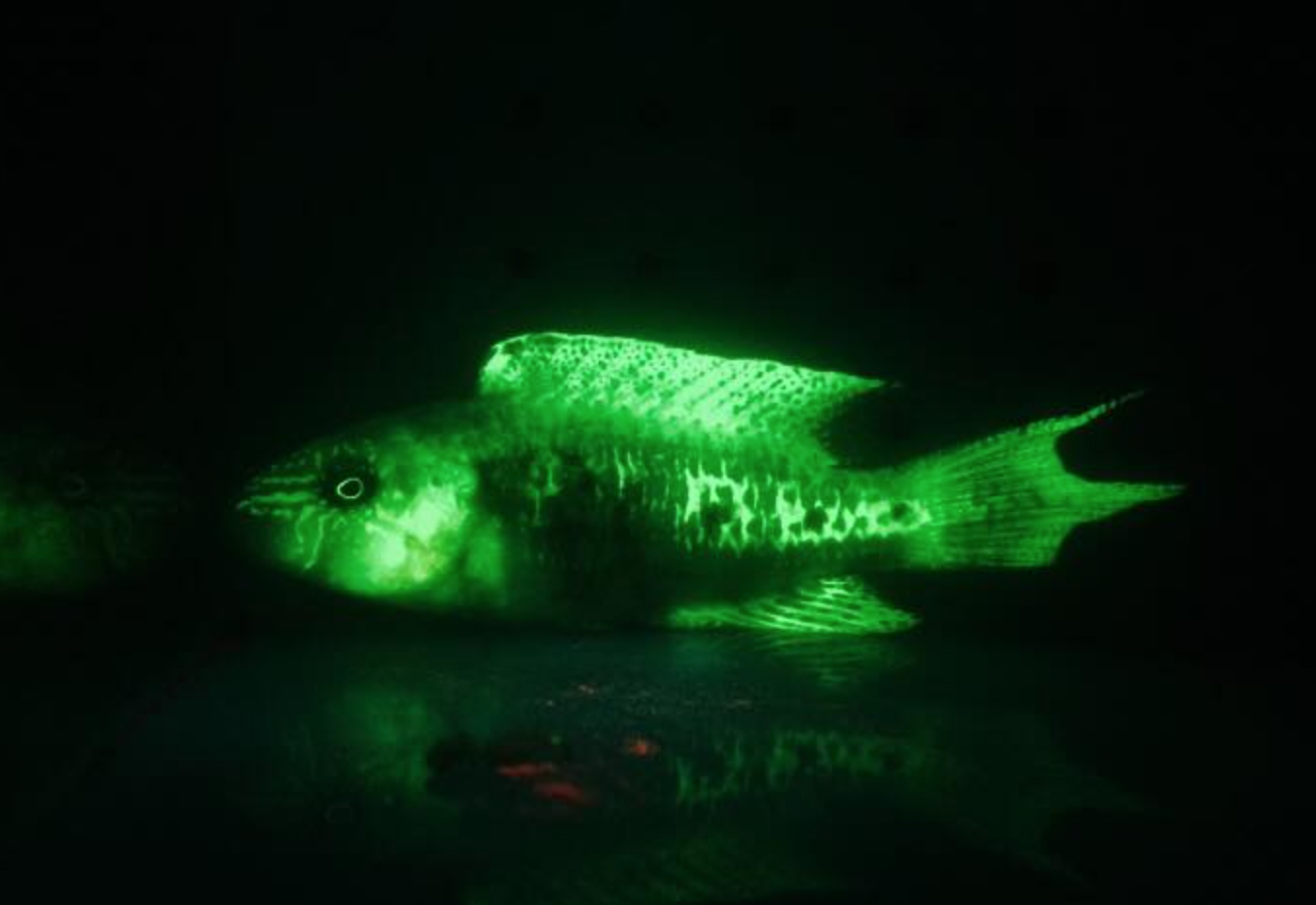Coral fluorescence is a magical phenomenon that is well documented, studied, and exploited by all who enjoy it. Fluorescence is an emission of light at a different wavelength from which was absorbed, and this causes a visible glow. Excitation however dies off almost immediately, usually within the span of a few nanoseconds once the source is removed. This means that fluorescence is only observed when the proteins are kept excited by a specific wavelength. Removal of which will result in termination and there is no residual fluorescence after source removal.
This process is also documented in fish, albeit less commonly. Oxycheilinus bimaculatus exhibits a particularly good example of reef fish fluorescence. When the fish is exposed to blue light, they emit a very strong fluorescence similar to those seen in coral. This fluorescence is best viewed through a yellow filter, as it absorbs all inferring blue light, revealing only the fluorescence.


We’re not sure if this phenomenon is caused by the same GFP seen in coral. But what we do know is that some species are particularly susceptible to fluorescent emission. If you’re a scientist specialising in reef fish fluorescence, and are in the mood to bestow your knowledge upon us, please feel free to do so.




